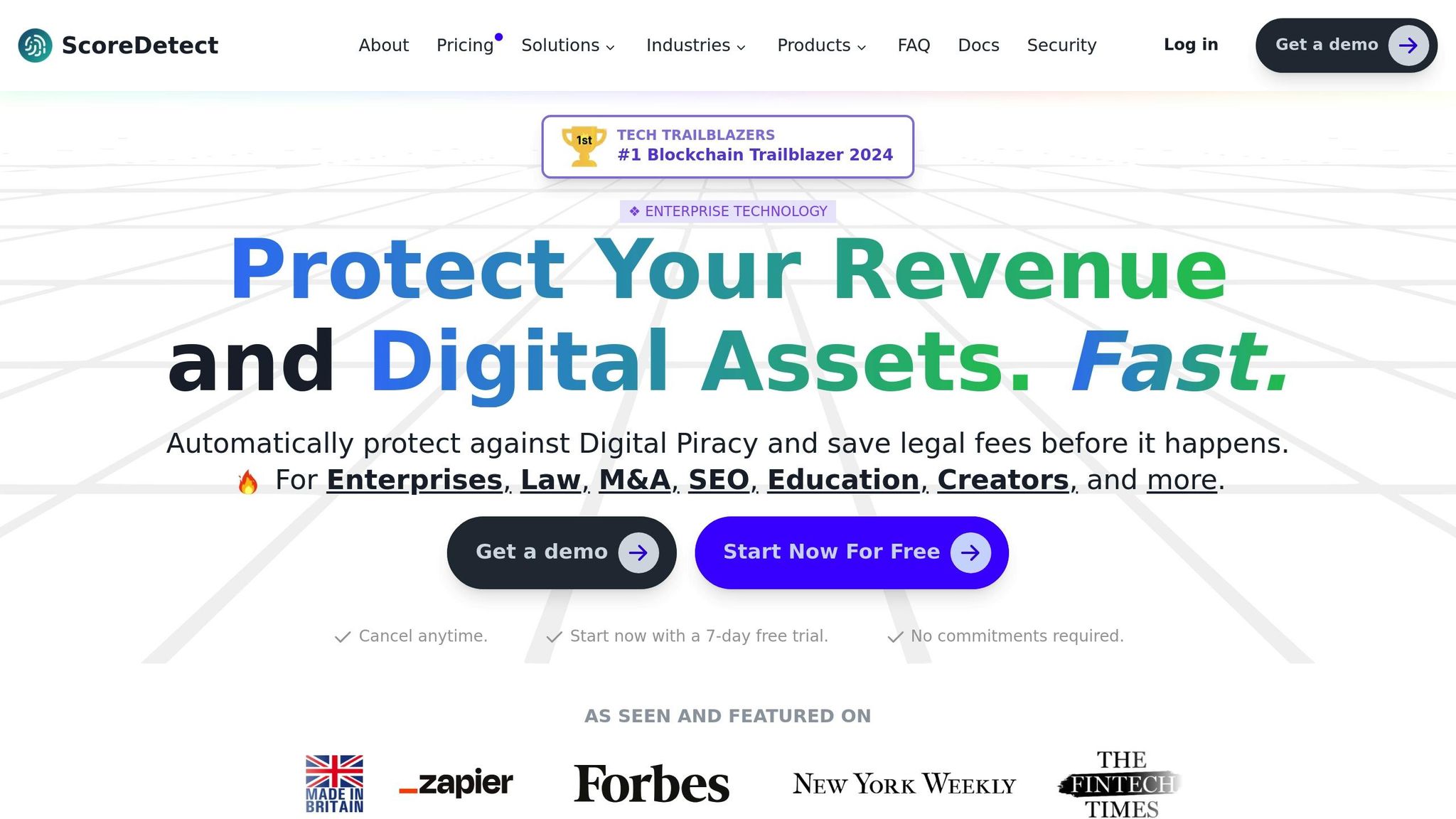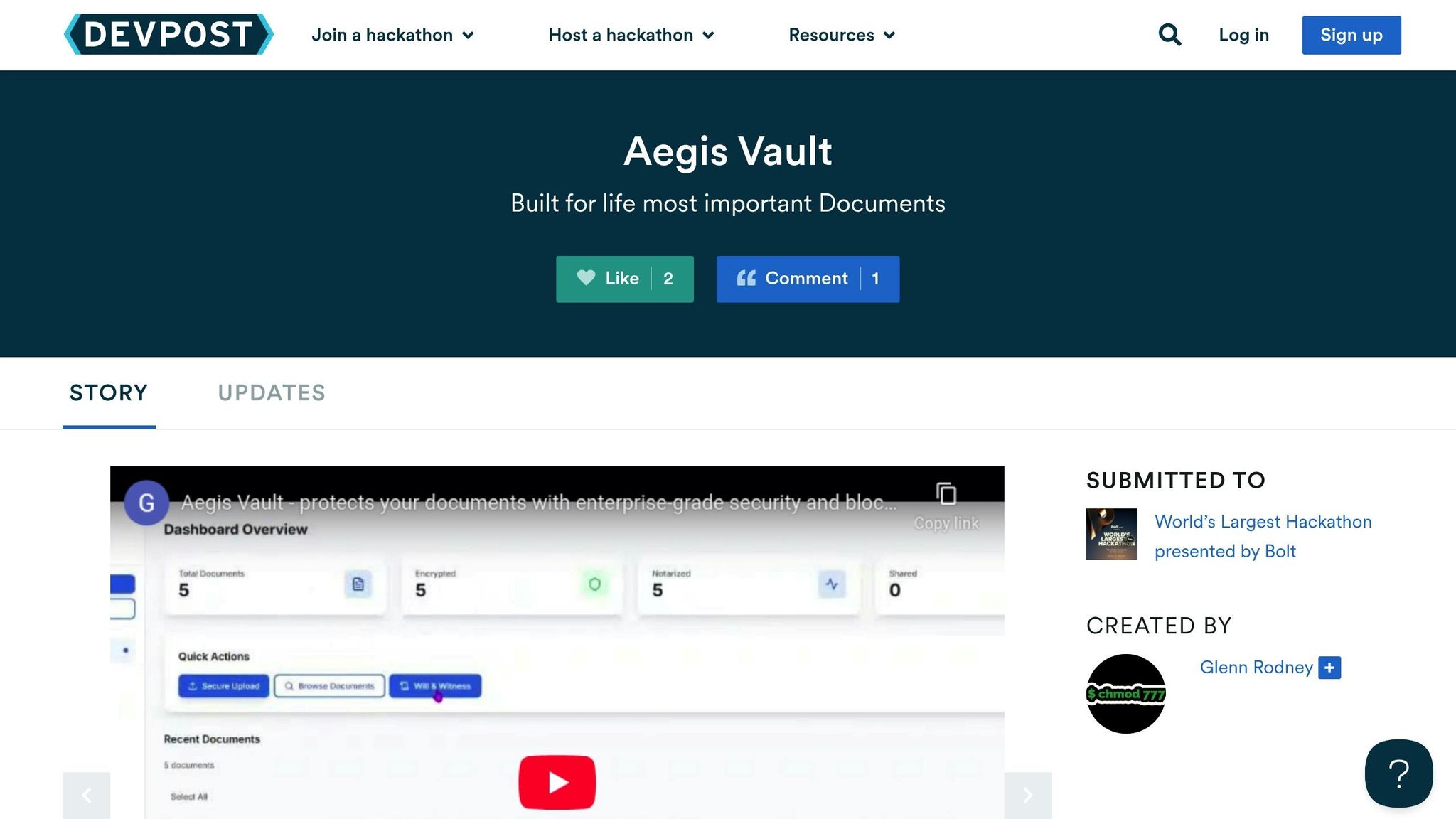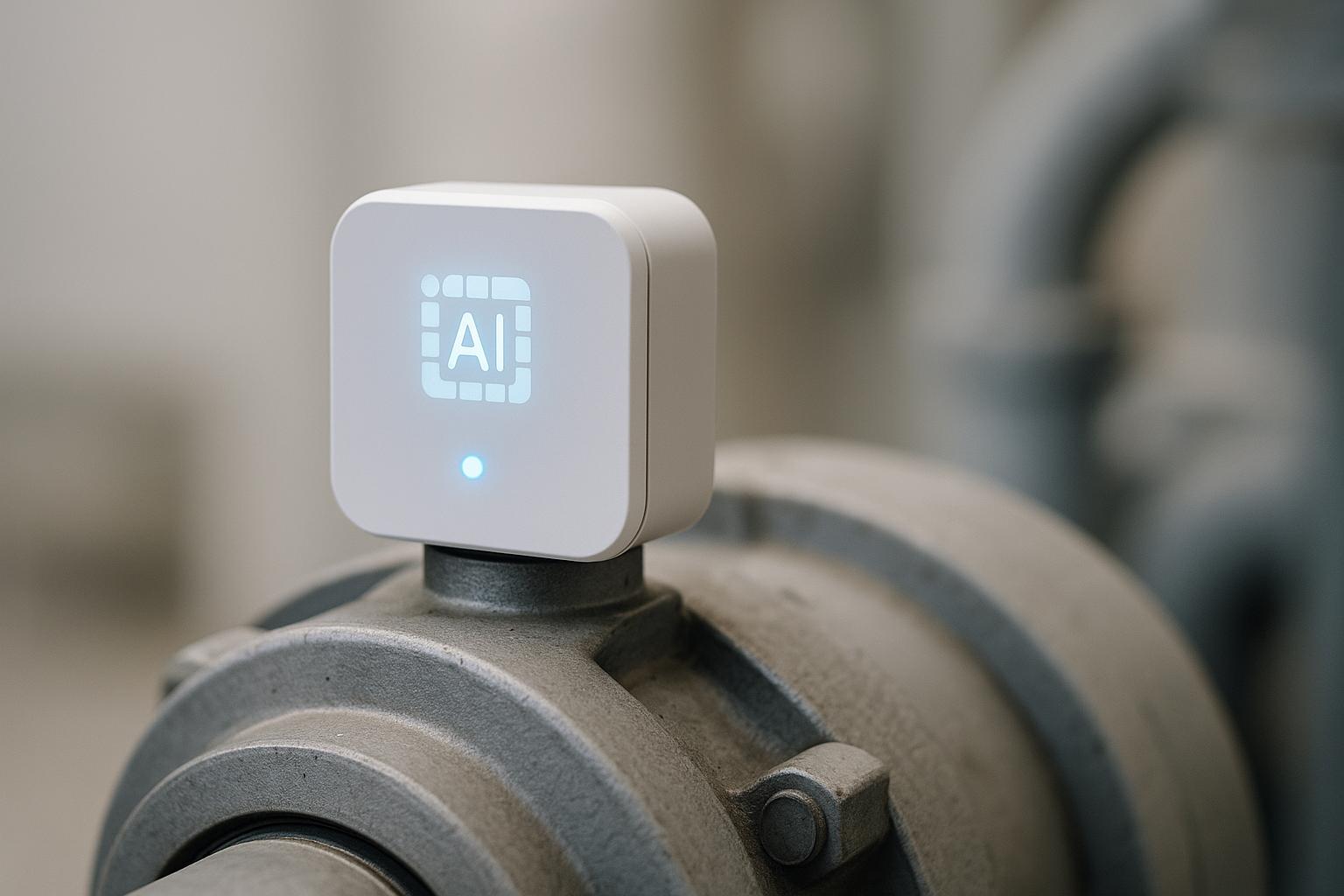Blockchain notarization is a secure way to verify digital documents by using blockchain technology to timestamp and protect them from tampering. Instead of storing the actual document, it creates a cryptographic hash (a unique digital fingerprint) and records it on the blockchain. This ensures the document’s integrity without exposing its content.
Key Takeaways:
- How It Works: A hash of the document is recorded on the blockchain with a timestamp. Any changes to the document will create a different hash, flagging tampering.
- Advantages:
- Eliminates the need for physical notaries or intermediaries.
- Provides global access for verification.
- Ensures tamper-proof records.
- Applications: Used in industries like healthcare, media, education, real estate, and supply chain to secure and verify ownership, authenticity, and timestamps of digital assets.
Example: ScoreDetect

ScoreDetect is a platform leveraging blockchain to protect digital assets. It offers features like invisible watermarking, automated takedowns, and SEO-friendly timestamps, ensuring content security while boosting online visibility.
Blockchain notarization is transforming how we protect and verify digital files, offering a faster, more secure alternative to older methods. As adoption grows, it’s becoming essential for managing digital assets in today’s digital-first world.
Aegis Vault – protects your documents with enterprise-grade security and blockchain notarization

How Blockchain Notarization Works
Blockchain notarization combines advanced cryptographic techniques, unchangeable timestamps, and smart contracts to ensure digital assets remain secure and verifiable. Let’s break down how this process works and why it’s so effective.
Digital Fingerprinting and Timestamping
The process begins by creating a unique digital fingerprint for each asset. This is done using a cryptographic algorithm, like SHA-256, which generates a hash – a string of characters that represents the asset’s exact state at a specific moment. Think of this hash as a snapshot of the document or digital file. Once created, the hash is recorded on the blockchain alongside a timestamp that cannot be altered. This timestamp acts as a permanent record of when the asset was hashed.
If you need to verify the asset later, you simply recalculate the hash and compare it to the one stored on the blockchain. If they match, the asset hasn’t been tampered with. However, any changes to the original document will produce a completely different hash, making it essential to finalize the document before creating its fingerprint [2]. This method ensures that the asset’s integrity is preserved and provides a foundation for automated verification through smart contracts.
Smart Contracts and Automation
Smart contracts bring automation into the notarization process. These are self-executing programs stored on the blockchain, with their terms written directly into code. When specific conditions are met, smart contracts automatically perform actions like verifying ownership or transferring rights. This eliminates the need for middlemen, cutting down on administrative work and reducing the risk of fraud. By enabling secure and automatic transactions, smart contracts simplify digital asset management while maintaining trust between parties.
Cross-Chain Notarization and Interoperability
As blockchain networks continue to grow, cross-chain notarization has become essential for managing assets across different platforms. This approach allows separate blockchain systems to communicate and share verification data, even if they use different protocols or consensus mechanisms. By enabling interoperability, cross-chain notarization breaks down barriers between platforms, ensuring unified asset management and consistent protection. This capability is particularly valuable as digital ecosystems become more complex, allowing users to verify and manage assets seamlessly across multiple networks.
Benefits of Blockchain Notarization for Digital Assets
Blockchain notarization builds on its technical strengths to improve the way digital assets are secured and managed. It offers a modern approach that enhances security, streamlines processes, and reduces costs compared to traditional notarization methods.
Security and Tamper-Proof Records
One of the standout advantages of blockchain notarization is its ability to create tamper-proof records. Thanks to its immutable ledger structure, any data added to the blockchain cannot be altered, ensuring the integrity and authenticity of digital assets. The decentralized design of blockchain further strengthens security by distributing data across multiple nodes, removing the risk of a single point of failure.
"Blockchain offers a powerful solution for securely storing and sharing digital assets… Once data is added to the blockchain, it becomes immutable, ensuring its authenticity and preventing unauthorized alterations." – Bulldog Law [6]
Blockchain technology also supports real-time transaction verification, which significantly aids in detecting fraud. For instance, the African Development Bank Group’s collaboration with BanQu led to the development of a Supply Chain Finance Blockchain for SMEs in Africa. This initiative improved transparency in supply chain operations, ensuring accurate tracking and allocation of funds [7].
A Deloitte study highlights the impact of blockchain on fraud prevention, with 81% of executives acknowledging its widespread adoption due to features like transparency and immutability [8]. The cryptographic foundations of blockchain make it nearly impossible to forge documents, as tampering would require altering the entire network – a feat that’s practically unattainable.
Another key feature is blockchain’s ability to create detailed audit trails. Unlike traditional notarization, which relies on physical documentation, blockchain provides a permanent, searchable record of every interaction with a digital asset. This is particularly useful for legal disputes or compliance checks where traceability is crucial.
How It Stacks Up Against Traditional Notarization
Blockchain notarization offers clear advantages over conventional methods, especially when comparing their performance across key criteria:
| Criteria | Blockchain Notarization | Conventional Notarization |
|---|---|---|
| Security | Tamper-proof thanks to blockchain immutability [2] | Vulnerable to forgery and tampering [5] |
| Transparency | Real-time access to verification data [4] | Relies on manual inspection [5] |
| Scalability | Handles large volumes efficiently [3] | Limited by physical processes |
| Cost | Reduces administrative overhead [2] | Higher costs due to travel and fees [5] |
| Legal Recognition | Gaining acceptance but varies by jurisdiction [2] | Well-established but less digital-friendly [4] |
Blockchain notarization is also incredibly fast. Unlike traditional methods that often require in-person appointments and travel, blockchain allows documents to be notarized in minutes. This 24/7 availability eliminates geographical and time-related barriers, making the process far more convenient [2].
Privacy is another area where blockchain excels. Instead of storing the actual content of a document, blockchain notarization only records its hash on the public ledger. This ensures confidentiality while still allowing verification [2]. In contrast, traditional notarization often involves physical handling of documents by third parties, which can expose sensitive information.
Blockchain’s legal credibility is also growing. Courts are increasingly accepting blockchain timestamps as reliable evidence of a document’s existence and integrity. A notable example is J.P. Morgan’s Quorum blockchain platform, launched in 2016, which demonstrates blockchain’s legal and financial reliability by supporting debt issuance and transaction settlements [7].
The potential of blockchain notarization is immense. Gartner predicts that blockchain will generate $3.1 trillion in business value by 2030, underscoring its ability to revolutionize document verification processes across industries [2]. With these advancements, blockchain notarization is emerging as a clear alternative to traditional methods, offering a faster, more secure, and cost-effective solution.
sbb-itb-738ac1e
Industry Applications and Adoption
Blockchain notarization, with its enhanced security and tamper-resistant transparency, is becoming a trusted tool across various industries. By safeguarding digital assets and simplifying verification processes, it addresses the growing demand for trustworthy digital transactions.
Key Industries Using Blockchain Notarization
Thanks to its unchangeable ledger, blockchain is making waves in sectors ranging from media to energy.
Media and Entertainment are leveraging blockchain to protect digital content. For example, in the music industry, platforms like Audius use decentralized systems to ensure artists are paid directly and fairly. Similarly, KodakOne supports photographers by tracking digital image ownership, helping them secure their intellectual property [9].
Healthcare is using blockchain to handle sensitive patient data securely. Medicalchain allows patients to store and share their health records with providers, while IBM applies blockchain to monitor drug production and distribution, reducing counterfeit medicines [9].
Supply Chain and Logistics industries are improving transparency and traceability with blockchain. Maersk provides real-time global logistics tracking, while FedEx uses smart contracts to automate workflows and cut down on paperwork. In the energy sector, Vakt streamlines trade settlements and documentation [9].
Education is adopting blockchain for issuing verifiable credentials. The University of Nicosia and MIT both use blockchain to create tamper-proof academic certificates and diplomas, simplifying the process of credential verification [9].
Real Estate is tapping into blockchain for secure property transactions and ownership records. Platforms like Atlant use blockchain to tokenize properties, allowing investors to purchase fractional ownership while maintaining reliable records [9].
Energy companies are exploring blockchain for renewable energy trading. Powerledger facilitates peer-to-peer energy exchanges, verifying production and consumption data to improve efficiency and cut costs [9].
The numbers back up this growing adoption. The global blockchain market is expected to reach $23.55 billion in 2024 and skyrocket to $152 billion by 2029, with an annual growth rate of 45.2% [9]. Additionally, 81% of the world’s largest public companies are already using blockchain technology [9].
Regulatory and Compliance Considerations
As blockchain notarization gains traction, regulatory frameworks are evolving to keep pace. In the U.S., the regulatory landscape presents both opportunities and challenges, particularly with state-level variations that complicate nationwide implementation. During the COVID-19 pandemic, 30% of notarial acts were conducted using Remote Online Notarization (RON), which has helped fast-track the acceptance of digital notarization methods [11].
States are taking steps to address blockchain-based services. For instance:
- California passed the Digital Financial Assets Law (DFAL) in October 2023, requiring licensing for businesses engaging in digital financial asset activities with residents, effective July 2025 [10].
- Colorado began accepting cryptocurrency for state tax payments in September 2022, while Hawaii formed a blockchain study task force the same year [10].
- Maryland allows corporations to maintain records using blockchain networks, Missouri expanded money laundering laws to include digital currencies, and New Hampshire exempted certain blockchain token activities from securities regulations [10].
Cross-border transactions add another layer of complexity due to differing payment regulations and challenges in enforcing smart contracts [12]. Companies are encouraged to adopt adaptable, compliant technologies and seek advice from legal experts in blockchain to navigate these hurdles effectively [11][12].
The online notarization market is also on the rise, projected to hit $1.8 billion by 2027 [13]. To stay ahead, organizations can engage with regulatory sandboxes or innovation hubs, gaining insights into shifting regulations and ensuring compliance in this rapidly evolving space.
ScoreDetect: Blockchain-Powered Digital Asset Protection
ScoreDetect taps into blockchain technology to safeguard digital content while improving its visibility and legal credibility. Named the #1 Blockchain Trailblazer in 2024 by Tech Trailblazers, this platform offers a fresh approach to protecting digital assets [14]. Let’s dive into how ScoreDetect uses blockchain notarization to strengthen content security.
How ScoreDetect Uses Blockchain Notarization
ScoreDetect builds on traditional blockchain notarization techniques but adds its own specialized features. Its blockchain e-Notary system generates a secure digital fingerprint by capturing only the content’s SHA-256 checksum. This process creates an unalterable Verification Certificate containing details like timestamps, user information, certificate type, version, and public URLs [14].
As an official partner of the SKALE blockchain – known for its eco-friendly design and zero gas fees – ScoreDetect achieves impressive transaction speeds, averaging about 3.569 seconds per operation [15].
"As a SaaS company owner, I find ScoreDetect to be a highly valuable tool for ensuring the integrity of our digital content."
– Joshua Chung, Startup Consultancy, CEO [14]
Features for Digital Asset Protection
ScoreDetect goes beyond notarization with a range of advanced features:
- Invisible Watermarking: Protects content without altering its appearance.
- Intelligent Web Scraping Defense: Boasts a 95% bypass rate to counter unauthorized use.
- Automated Takedown System: Achieves a remarkable 96% content removal success rate [15].
For businesses focused on SEO, ScoreDetect provides SEO-friendly timestamps, enhancing Google’s E-E-A-T (Experience, Expertise, Authoritativeness, and Trustworthiness) signals. This translates into better search visibility, improved rankings, and higher conversions. In one case study, a user reported a projected monthly net value increase of $1,000 and an ROI exceeding 8,233.33% [15][16].
The platform also supports over 7,000 app integrations via Zapier, enabling smooth automation. Additionally, its WordPress plugin automatically tracks published or updated articles, creating blockchain-verified proof of ownership while boosting SEO.
Industries Served by ScoreDetect
ScoreDetect provides digital asset security across multiple fields:
- Media and Content Creation: Ensures creators can confidently protect their work.
- Legal and Law Firms: Offers tamper-proof notarization for documents and evidence.
- Finance and Banking: Safeguards proprietary research, market analyses, and regulatory files.
- Healthcare: Secures sensitive research data and clinical studies.
- Education: Helps academic institutions verify authorship and prevent plagiarism.
- Marketing and SEO Agencies: Protects content while enhancing Google E-E-A-T scores.
ScoreDetect offers two pricing options: a Pro plan at $12/month (with a 7-day free trial) for individuals, and an Enterprise plan tailored for larger organizations with additional features.
"ScoreDetect is exactly what you need to protect your intellectual property in this age of hyper-digitization. Truly an innovative product, I highly recommend it!"
– Imri, Startup SaaS, CEO [15]
Conclusion
Blockchain notarization is redefining how we secure and authenticate digital assets. By offering tamper-resistant security, round-the-clock accessibility, cost savings, and global verification, it outpaces traditional methods in both efficiency and reliability [2]. As industries continue their digital transformation, the demand for dependable and transparent authentication solutions is only growing.
The numbers tell an impressive story. The global blockchain market for identity management is expected to grow from $1.3 billion in 2023 to $35.1 billion by 2028 [2]. This technology directly addresses challenges like fraud, tampering, and even deepfakes by providing verifiable proof of authenticity [1]. Unlike traditional notarization, which depends on intermediaries and physical presence, blockchain creates an unchangeable digital fingerprint that can be verified instantly, no matter where you are.
A great example of blockchain’s potential in action is ScoreDetect. This platform combines blockchain timestamping with features like invisible watermarking and automated takedowns. It not only protects digital assets but also supports business growth by improving search engine visibility through integrated SEO tools. Plus, its legal-grade authentication ensures both security and compliance, delivering a blend of protection and commercial advantages.
As the digital economy continues to expand, blockchain notarization is poised to become a cornerstone for businesses managing digital assets. Those who adopt this technology now will be better equipped to safeguard their intellectual property, meet regulatory requirements, and build trust in an increasingly digital world.
FAQs
How does blockchain notarization improve the security and authenticity of digital assets compared to traditional methods?
Blockchain notarization strengthens the security and integrity of digital assets by using cryptographic methods to create records that can’t be tampered with. Unlike traditional notarization methods, it offers a transparent and unchangeable way to prove a document existed at a specific moment, making any unauthorized changes or edits immediately noticeable.
This approach also removes the need for middlemen, cutting down on the chances of fraud and human mistakes. By relying on decentralized verification, blockchain notarization offers a more dependable, efficient, and scalable way to safeguard digital assets.
How do smart contracts streamline blockchain notarization and improve efficiency?
Smart contracts streamline blockchain notarization by automating tasks according to set conditions. When these conditions are fulfilled, the contracts execute on their own, eliminating the need for middlemen and cutting down on manual effort.
This level of automation speeds up processes, improves precision, cuts operational costs, and boosts efficiency. With smart contracts, businesses can build secure and transparent systems to manage digital assets without relying on trust-based intermediaries.
How is blockchain notarization being used across industries, and what are some real-world examples?
Blockchain notarization is making waves in industries such as real estate, law, healthcare, government, and finance by offering a secure way to authenticate digital assets and documents. Its tamper-proof nature brings transparency, minimizes fraud, and streamlines verification processes.
Take real estate, for instance – blockchain can notarize property titles and deeds, ensuring their authenticity. In the legal field, it’s used to validate evidence. Governments rely on it to record civil partnerships, while healthcare institutions use it to secure clinical trial data. These examples show how blockchain helps protect sensitive information and build trust across a variety of fields.

